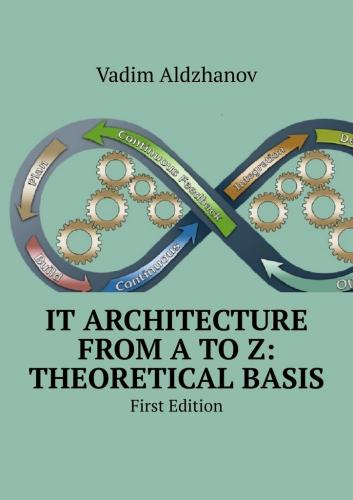Getting maximum value from IT
Most organizations, except IT company, IT is used only as a tool to achieve business goals, a secondary service, just like accounting or administration, providing support for key areas and processes. IT evaluates solutions in terms of technical maturity, completeness, functionality, and so on. At the same time, the business’s only interest is making profit. A perfectly developed technical solution can nullify the business advantages of the idea itself, make it difficult to use and expensive to implement and maintain. It reduces financial benefits and makes the solution inconvenient for customers, etc. The tasks of CIO is not to develop the best solution from the IT point of view, but the most correct one. The most correct solution will be made by using the formula and of the following key components:
VALUE = BENEFIT – COSTS
From a business perspective, it can be interpreted as getting maximum value from IT. The value of information technology is the difference between the benefits of using information technology and the its cost. From an IT perspective: Compliance with IT values and requirements i.e. workability, security and manageability.
Transferring part of the work to the IT department or refusing to automate a number of elements can reduce the cost of the solution, increase ease of operation and convenience for customers.
One of the primary objectives is to define the boundaries to search for opportunities and identify the border, beyond which is destroing the foundations of IT manageability and information security.
Management of change
What we mean in the context of this chapter is the readiness for changes initiated by the business. The business environment can change quickly and radically: new business niches emerge, new products are developed, mergers and acquisitions take place. This can lead to the situation when technical solution used in the organization does no longer meet the organization’s requirements. The IT objective is to adapt an existing solution or develop a new one as soon as possible spending minimum budget to meet the business’s new requirements. As a result, when developing IT strategies and IT solutions in particular, it is necessary to keep in mind a certain flexibility and generality.
Sorting out and managing IT development
Modern realities of business and technology development lead requirement to implement more and more new technological solutions. Different methods and models of their implementation, i.e. independent development, the purchase of a Commercial Off-the-shell solution, implementation and maintenance by a third party, etc. leads to a large number of different duplicated hardware and software in IT infrastructure, obsolete solutions, and so on. Moreover, it generates constant dependence on professionals with “unique” knowledge and experience. The task of the CIO is to arrange IT management, continuous training on new technologies for employees, selection of promising directions to benefit business.
Basic principles of building Enterprise Architecture
The integrated automation of the management function in any modern enterprise requires a unified information space, in which ordinary employees and management will be able to carry out their activities, being guided by single rules for access, presentation and processing of information. Modern methods of building a single information space are based on a comprehensive re-engineering of business processes, creating an information-logical model and then implementing the appropriate software and information support using new technologies. The development of IT architecture allows you to clearly imagine:
• What information / data are critical for the company’s business and the way it is organized?
• Which applications will support the business?
• Whether these applications effectively communicate with each other and with external systems of partners and suppliers;
• Whether the technologies used meet the requirements of supporting business processes;
• Whether the information security of the systems is sufficient?
• Whether the company employees get timely access to the right data they need;
• What standards should be used in the development and procurement of system components?
The architecture is designed using common methodologies, frameworks of architecture description and modeling tools (for example, ARIS IT Architect) taking into account the customer’s experience and preferences. During the project a set of architectural principles is formed, used and prospective standards are identified, and architectural models and individual areas such as applications, data, integration, technical infrastructure, security, etc. are developed.
The approximate sequence of building a single information space of the enterprise is the following:
• Enterprise survey
° Main goals and objectives;
° Precise identification of the project objectives and goals;
° Formulation of functional and technical requirements for the project;
° Infrastructure audit of the enterprise IT system for the design of the solution architecture;
° Shaping the enterprise’s ongoing business processes, automated within the project;
° Obtaining data to justify the number of licenses;
° Evaluation of the resources required for the project;
° Project risk assessment;
° Development of a preliminary project plan, schedule and specification of supplies for each stage and whole project.
• Survey results:
° Report on the situation “As is”;
° Proposal for creating an information system “As required”;
° Proposal for “functional and technical requirements of the project”;
° Project implementation plan;
° Project risk assessment and proposals for their minimization;
° Estimated cost of the pilot project and final solution.
• Supply of necessary hardware and functional solutions for the business units automation:
° Adaptation and adjustment of basic and development of new solutions (if required) in accordance with the functional and technical requirements obtained at the survey stage;
° Deploying a platform with basic document processing and storage services;
° Trial operation of the solution;
° Integration with ERP-system;
° Putting the system into commercial operation.
• Training of technical staff and users.
• Providing additional functionality, i.e. the work allocated at the stage of the survey in separate stages.
Framework is a ready-made methodology and a set of supporting tools to be adapted for use in a particular company. Framework contains typical architectural processes, recommendations for their adaptation for
